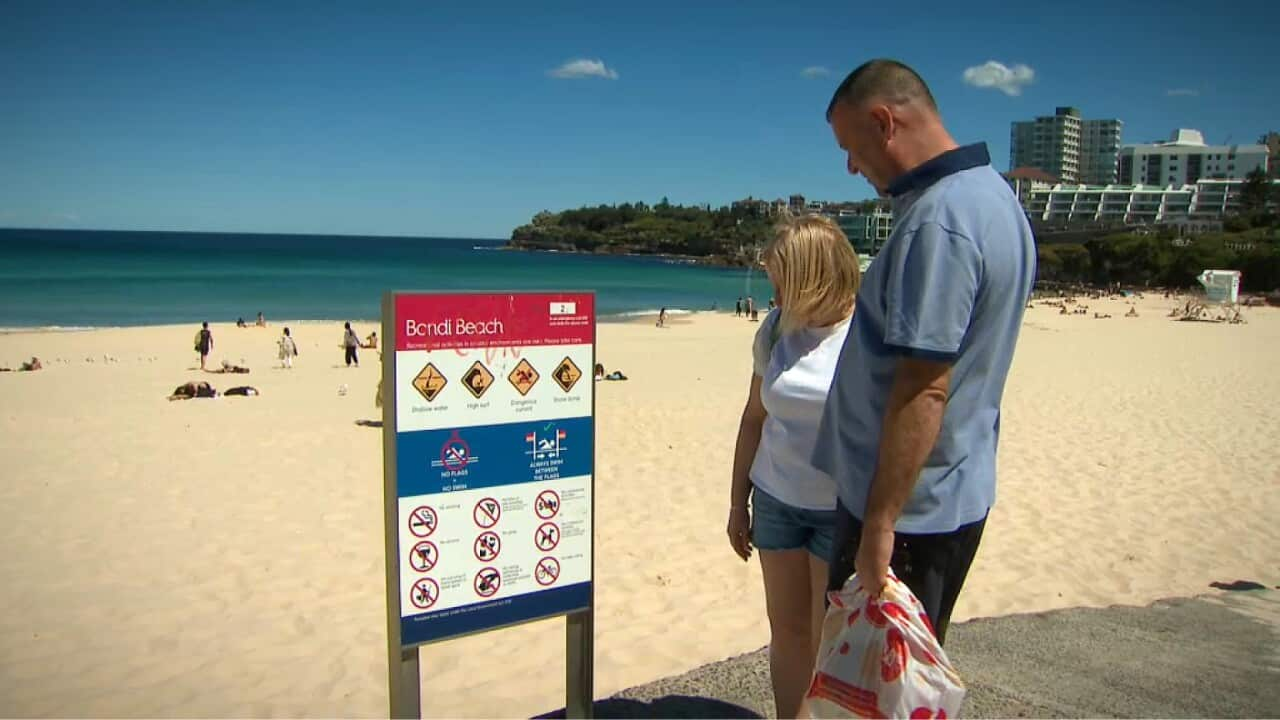Italian
Un numero record di 141 morti da annegamento si è verificato sulla costa australiana nel 2021/2022, spingendo a interrogars quanto i segnali di sicurezza stiano funzionando.
Un nuovo studio ha intervistato 160 persone a Bondi Beach, facendo domande sulla loro interpretazione della segnaletica.
Si è scoperto che circa la metà delle persone nate all’estero ed il 40 per cento delle persone nate in Australia non si preoccupa per niente di leggere i cartelli.
Lo studio ha rivelato anche che circa il 30 per cento dei bagnanti australiani e non australiani pensavano che il messaggio “nuotare tra le bandiere” significasse che potesse stare là soltanto chi stava nuotando propriamente.
Al contrario, la metà di tutti i bagnanti ha inteso che il segnale nessuna bandiera=non nuotare significasse che è consentito entrare in acqua, a patto di non nuotare, e che sia ok giocare e camminare nell’acqua.
La ricerca è stata condotta dal dottor Masaki Shibata dell’Università di Adelaide.
“Basically the tourists thought that swim between flags means you literally have to swim and if you can’t swim you have to be outside, now that’s a horrible interpretation isn’t it.”
Uno dei risultati di Shibata è che le autorità dovrebbero rivedere i codici colore, incluse le bandiere gialle e rosse, perchè in alcuni Paesi rosso significa pericolo.
Questo turista non ne era affatto sicuro:
“Normally I would look for flags see if it's dangerous, I don’t know the colours here but I take it, red means don’t go in the water it’s too dangerous do you have that?"
Il dottor Shibata ha suggerito che le immagini potrebbero spiegare più accuratamente i pericoli che gli stranieri potrebbero non capire - come le meduse urticanti conosciute qui come “bluebottles”.
“Only 50 percent of overseas-born beach-goers know what a bluebottle is but when you think about it, If someone tells you, you know, 'be careful with bluebottles' you might think 'is that a piece of glass or something' right? It could be a blue coloured bottle. So this is another thing that what we were using on Bondi Beach, even if overseas-born beach-goers read the signage, they may not understand what it means!”
Shane Daw, della Surf Lifesaving Australia -che non si occupa di posizionare i segnali - ha detto che uno dei problemi è che le persone semplicemente ignorano gli avvertimenti.
“I think we need to be a little bit careful about which way we go with this. I think there needs to be better introduction and awareness that when people are coming to Australia they are aware of what they may be exposed to.”
Daw ha anche rivelato una statistica sorprendente; delle persone annegate di cui si conosceva la città natale, soltanto il 12 per cento erano turisti, studenti stranieri o backpacker che normalmente vivono all’estero.
Questo significa che le persone più a rischio di annegamento sulle coste sono cittadini australiani nati all’estero.
English
A record 141 drowning deaths occurred on the Australian coast in 2021-22, prompting some to question how well the safety signs are working.
A new study surveyed 160 people at Bondi Beach, asking about their interpretation of messaging.
It found about half of people born overseas and 40 per cent of Australian-born people don't bother reading the signs at all...
It also revealed about 30 percent of Australian and overseas-born beach-goers thought the ‘swim between the flags’ message means only those who are properly swimming - such as doing laps - could be there.
While half of all beach-goers interpreted the no flags = no swim sign to means that you can go in, just not to swim... but playing and wading is ok.
The research was carried out by Dr Masaki Shibata from the University of Adelaide:
“Basically the tourists thought that swim between flags means you literally have to swim and if you can’t swim you have to be outside, now that’s a horrible interpretation isn’t it.”
One of Dr Shibata's findings is that authorities should reconsider colour codings including the red and yellow flags, because in some countries red actually means danger.
This tourist certainly wasn't sure:
“Normally I would look for flags see if it's dangerous, I don’t know the colours here but I take it, red means don’t go in the water it’s too dangerous do you have that?"
Dr Shibata suggests that picture images could more accurately explain dangers that foreigners might not understand - such as the stinging jellyfish known here as 'bluebottles'.
“Only 50 percent of overseas-born beach-goers know what a bluebottle is but when you think about it, If someone tells you, you know, 'be careful with bluebottles' you might think 'is that a piece of glass or something' right? It could be a blue coloured bottle. So this is another thing that what we were using on Bondi Beach, even if overseas-born beach-goers read the signage, they may not understand what it means!”
Shane Daw from Surf Lifesaving Australia - which doesn’t put up the signs - says one of the issues is that people simply ignore the warnings.
“I think we need to be a little bit careful about which way we go with this. I think there needs to be better introduction and awareness that when people are coming to Australia they are aware of what they may be exposed to.”
Mr Daw says one surprising statistic is that of the people who drown whose birthplace is known, only 12 per cent are tourists, international students or backpackers who are normally resident overseas.
That means it is overseas-born Australian residents who are most at risk from drowning on the coast.
Report by Kath Landers for SBS News.
Ascolta tutti i giorni, dalle 8am alle 10am. Seguici su , e o abbonati ai nostri podcast cliccando .




